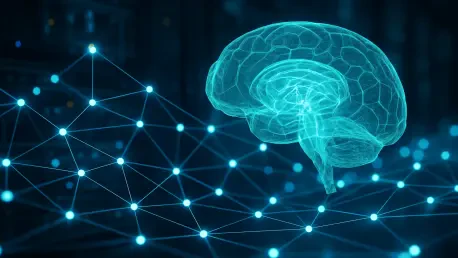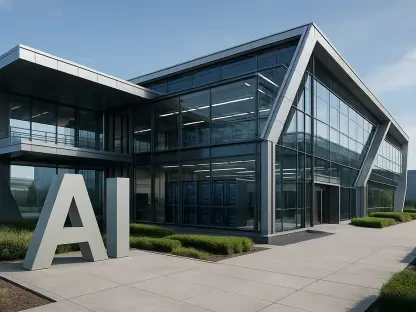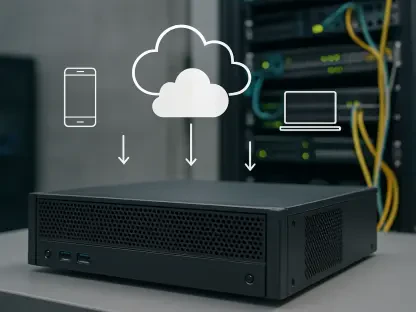In an era where connectivity is the backbone of daily life, telecommunications companies face mounting pressure to ensure seamless network performance, especially during unpredictable events like natural disasters or massive public gatherings. Imagine a hurricane tearing through a coastal region, knocking out cell towers and leaving communities stranded without communication, while the challenge of restoring coverage in mere hours, or even minutes, seems daunting, yet it’s a reality that technology is now tackling head-on. AT&T has stepped into this arena with a pioneering solution that harnesses the power of artificial intelligence to revolutionize network planning and disaster response. This cutting-edge system not only promises to maintain connectivity under duress but also redefines how networks adapt to ever-changing conditions, setting a new standard for reliability and efficiency in the industry.
Transforming Network Management with AI
Revolutionizing Disaster Response Strategies
When natural disasters strike, the immediate loss of network coverage can hinder emergency response and isolate communities in critical need. AT&T’s innovative Geo Modeler, powered by Generative AI, addresses this challenge by simulating radio transmissions in complex geospatial environments. Using synthetic data and a Network Foundation Model (NFM), combined with ray tracing technology, the system delivers near real-time predictions for network adjustments. For example, during a storm that disables a cell tower, the Geo Modeler can analyze the situation in seconds and suggest precise modifications, such as tweaking antenna angles on adjacent towers to close coverage gaps. These automated responses, while overseen by human operators for accuracy, drastically reduce downtime and ensure that first responders and residents stay connected when it matters most, showcasing a significant leap in disaster preparedness.
Beyond the immediate crisis, the impact of such technology on long-term recovery efforts is equally profound. The Geo Modeler supports AT&T’s Network Disaster Recovery (NDR) program, which involves over 400 dedicated personnel ready to act during emergencies. Traditionally, preparation for events like hurricanes involved a level of uncertainty, with manual assessments taking precious time. Now, with AI-driven insights, the system provides data-backed solutions that streamline resource deployment and prioritize areas of greatest need. This capability not only enhances the speed of restoring services but also builds resilience into the network infrastructure, ensuring that future disruptions can be mitigated more effectively. The result is a more robust framework that safeguards connectivity under even the most challenging circumstances.
Enhancing Everyday Network Performance
The versatility of the Geo Modeler extends far beyond emergency scenarios, playing a pivotal role in routine network optimization. Environmental factors, seasonal changes, and high-traffic events like concerts or sports games often strain network resources, leading to inconsistent performance. By dynamically adapting to these variables, the system ensures optimal connectivity across diverse conditions. It intelligently allocates resources to prevent congestion and maintain service quality, whether in urban centers or rural areas. This adaptability reflects a forward-thinking approach to telecommunications, where AI doesn’t just react to problems but anticipates them, providing a smoother experience for millions of users nationwide who rely on consistent access for work, communication, and entertainment.
Moreover, the Geo Modeler’s influence reaches into innovative applications that support emerging technologies. Consider the use of drones by first responders during search and rescue operations. The system calculates efficient flight paths and elevations while simultaneously optimizing network signals to ensure uninterrupted communication. This dual functionality underscores its importance in public safety, where every second counts. By integrating such advanced capabilities, the technology not only addresses current demands but also lays the groundwork for future needs, positioning AT&T at the forefront of network innovation. The ability to seamlessly blend everyday optimization with cutting-edge support for new tools highlights the transformative potential of AI in reshaping how connectivity is managed.
Pioneering the Future of Telecommunications
Driving Toward Network Autonomy
A significant trend emerging from the deployment of the Geo Modeler is the shift toward network autonomy, a concept that minimizes human intervention while maximizing efficiency. With features like auto-healing capabilities and dynamic capacity allocation, the system can independently address issues such as signal interference or sudden spikes in demand. This automation accelerates decision-making processes, reducing the time needed to implement solutions from hours to mere seconds. As a result, customers experience fewer disruptions, and service reliability reaches new heights. Industry experts have noted that this move toward self-managing networks represents a turning point in telecommunications, where technology takes on a more proactive role in maintaining uptime for consumers, businesses, and emergency services alike.
The implications of this autonomy extend into future possibilities that could redefine connectivity on a broader scale. For instance, the integration of AI-powered APIs for connected cars is on the horizon, promising to enhance vehicle-to-network communication for safer and smarter transportation. The nationwide rollout of the Geo Modeler marks a critical step in this journey, demonstrating how automated systems can handle complex tasks with precision. Supported by the AT&T Guarantee of customer satisfaction, this technology not only improves current service levels but also opens doors to innovations that were once thought impossible. The focus on reducing manual oversight while ensuring accuracy reflects a commitment to building networks that are not just reactive, but truly intelligent and forward-looking.
Industry Recognition and Lasting Impact
The value of the Geo Modeler has not gone unnoticed, as industry analysts have praised its ability to predict network parameters in near real-time, especially during crises. Will Townsend, a principal analyst at Moor Insights & Strategy, has highlighted the system’s effectiveness in delivering service assurance under pressure. His observations, drawn from witnessing the technology in action, affirm its role in maintaining connectivity for a wide range of stakeholders, from everyday users to first responders. This expert validation underscores a broader industry consensus that AI is becoming an indispensable tool in telecommunications, capable of addressing challenges that traditional methods struggle to solve, and setting a benchmark for others to follow.
Reflecting on the strides made, it’s evident that the deployment of this AI-driven system marked a turning point in how network challenges are approached. The ability to automate critical adjustments and support cutting-edge tools like drones demonstrates a blend of innovation and practicality that reshapes expectations. By prioritizing both immediate response and long-term resilience, the technology ensures that connectivity remains a lifeline during emergencies and a convenience in daily life. Looking ahead, the focus should shift to expanding these capabilities, exploring new applications, and refining AI models to anticipate even more complex scenarios. The path forward involves collaboration across the industry to harness such tools for greater public safety and service quality, ensuring that the lessons learned continue to drive progress in network management.









